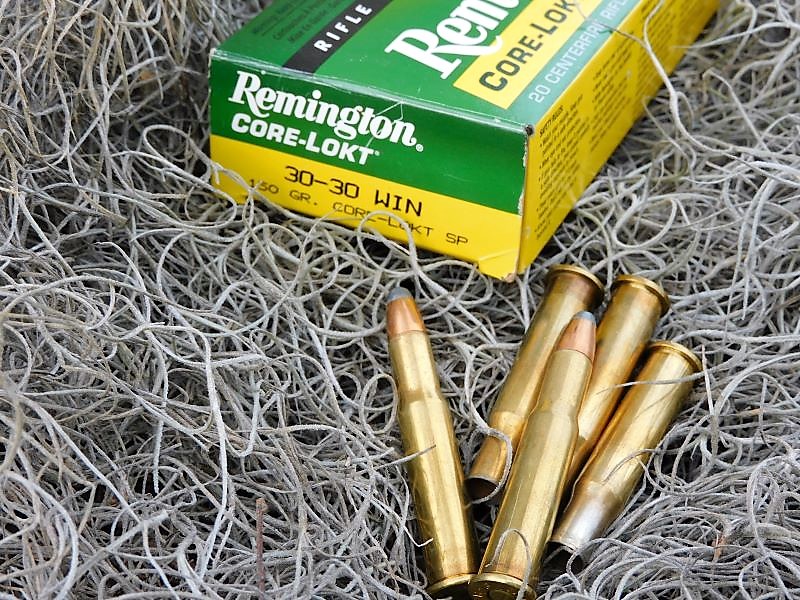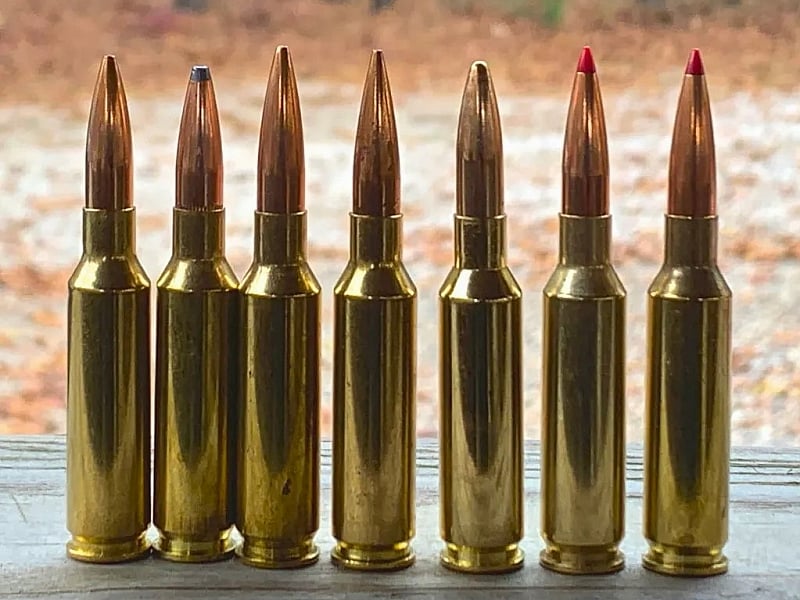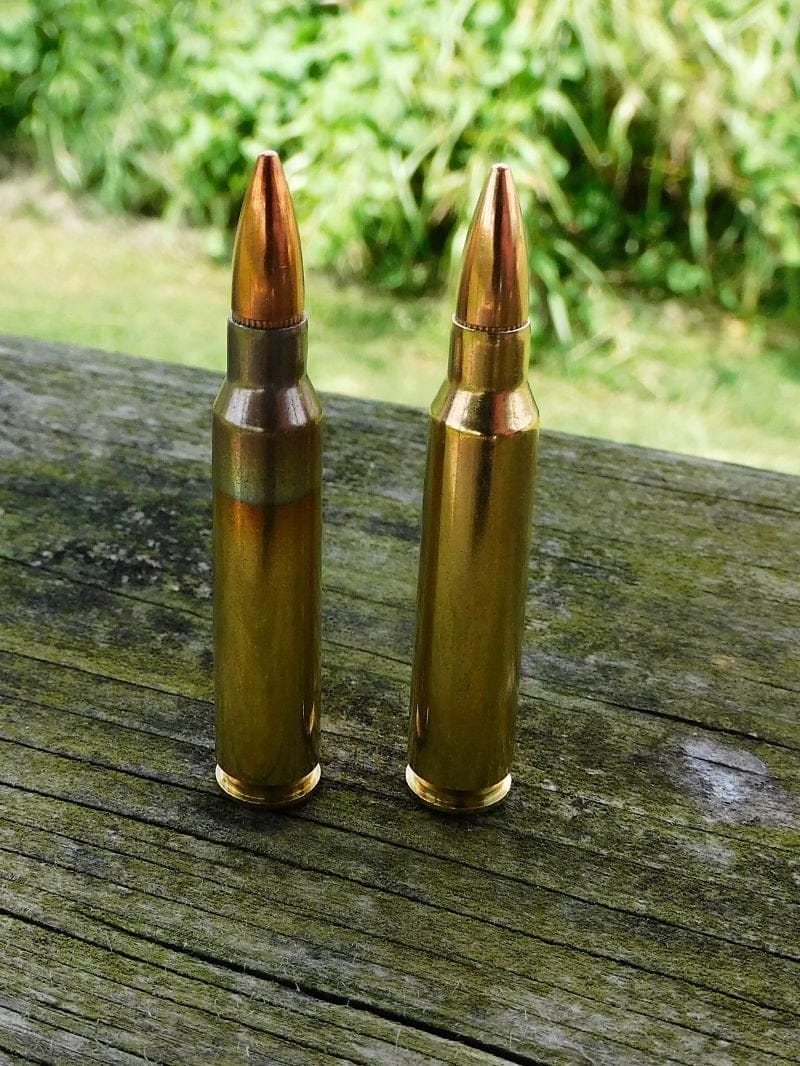Remember, remember, the first weeks of November, and chances are that you will be at the start of the regular deer season. When it comes to the hunting tool of choice at that time of year, it is going to be the rifle and the most popular quarry, whitetail deer. But if you want to get into the deer woods for the first time — or the first time in a long time — it is mindboggling to see an everchanging list of rifles and even more cartridges to choose from.
Each deer cartridge will have its adamant defenders, but that doesn’t make them the best for all possible hunting scenarios. What works in the Louisiana swamp can come up short in the Western grasslands, and what works for the gray hair might not work for the greenhorn. But there are some all-around excellent cartridges and a few that you should steer clear of. Here are my top five deer cartridges worth looking at, and a few you should think twice about.
.30-30 Winchester

The .30-30 Winchester, or .30 WCF, has been around nearly as long as smokeless powder and jacketed bullets. The .30-30 debuted in 1895 for the Winchester 1894 lever action rifle. The millions of Winchester and Marlin rifles in circulation throughout the years have made the .30-30 a preeminent deer cartridge for decades. Interest has spiked and waned and spiked again over the years, but the .30-30 remains a viable round despite all the attempts to replace it with a better round.
In its heyday, the .30-30 was a high-velocity round, whose 150-170 grain flat-nosed bullets carried more hitting power at range than any other common rifle round, save for the .45-70. Today, there are faster rounds that use more aerodynamic spitzer bullets. The old 30-30 is a rimmed bottlenecked round that is usually loaded with a flat point or soft-point bullet for easy loading into the tubular magazine of lever action rifles. These rounds are traveling about 2,220 feet per second. The elderly 30-06 has been around nearly as long as the 30-30 and can push a similar projectile at 2,700. But more power is not everything. What it lacks in long-range and smoking bullet speeds, the .30-30 makes up for low recoil, availability, and a unique propensity to punch above its weight.
While there are many single-shot rifles and a few old bolt actions out there in .30-30, you will probably find it in any number of Winchester, Marlin, or Henry lever action rifles. Even in these light, handy rifles, the .30-30’s more sedate velocity equates to less hit on the shoulder. For the new shooter, this makes for one less obstacle in learning to shoot well. The less felt recoil also allows the shooter to keep a good sight picture and get a follow-up shot, if need be. Needing a second well-placed .30-30 round in the vital zone of a deer is unlikely to be necessary. The .30-30’s exposed flat point bullet excels at dumping its energy and plenty of blood, whereas some faster, spitzer rounds can struggle to leave a blood trail.
The .30-30 is also an easy round to shoot in terms of the pocketbook. The round is available for a sum less than most centerfire rifle rounds. Rifles are readily available and can be had for a reasonable sum, particularly the millions of used models out there. The newest production models from Winchester, Marlin, and Henry do command a premium over a budget bolt action rifle. This is one potential downside to a round that can’t seem to go out of style.
.350 Legend

The .350 Legend uses a .357-inch diameter jacketed bullet traveling at over 2000 feet per second. The .350 has the same rim diameter as the .223 Remington, allowing it to be readily used in AR-style semi-automatic rifles without changing the magazines or bolt carrier to anything proprietary. The .350 enjoys a velocity premium over other popular conventionally-loaded straight-wall rounds like the .357 Magnum, .45-70, and .450 Bushmaster, while lacking the recoil of those latter rounds.
The .350 is available in a number of bullet weights, but the most common is 160-180 grains. One does not need to want or have an AR to shoot the round either. Winchester debuted their XPR bolt action rifle with the round and Henry Repeating Arms has since chambered their single-shot rifle in the .350. Ruger also offers the round with their American line of rifles. While the .350 might be the option for restrictive states, it is a good option for close-in hunting and for those who feel the need to take their AR to the next level.
6.5 Creedmoor
In the world of whitetail-worthy rounds, 6.5mm rifle rounds are an excellent choice. These rounds offer lower felt recoil over conventional .30 caliber rounds, but generally use bullets close to the same bullet weight. That equates to a projectile with a higher sectional density that bucks the wind and retains its energy further than other rounds. That long projectile also has great penetration potential. One of the latest 6.5mm cartridges to come around is the 6.5 Creedmoor. Hornady’s engineers took the existing .30 Thompson Center case and necked it down to accept a .264 diameter (6.5mm) bullet. This round fires a 120-140 grain bullet at roughly 2800 feet per second. The finished round has a shorter overall length, which allows it to be put into intermediate action bolt action rifles with a short bolt through. The round could also be readily put into use with autoloading rifles.

.223 Remington
The .223 Remington has been around much longer than the 6.5 Creedmoor and it is much less accepted as a whitetail round. But it is a round that can be very effective. It was developed in 1957 by Remington for the US Air Force’s requirements for a new .22 caliber combat rifle. That rifle would become the M16. But even as the M16 came online, Remington marketed the round for hunting, primarily as a varmint cartridge. The .223 Remington shot a lightweight 55-grain bullet at over 3200 feet per second, a blistering pace that could deliver the goods to small critters.

The shooting public as a whole was quite used to larger .30 caliber rounds. Comparing rounds like the .30-06, .308, and .30-30 to the .223, the .223 cannot help but look small by comparison. But as the AR-15 grew in popularity for personal defense and recreation, people wanted to hunt with them as well. This led to the development of rounds for the rifle that could meet state hunting guidelines. But in states where the minimum caliber is a .22 caliber centerfire, the .223 is legal. But is it ethical?
The .223 is neither the least nor most powerful .22 caliber centerfire round out there. But the .223 has the economies of scale on her side. .223 ammunition is inexpensive to buy and practice with. It also is unmatched in the variety of ammunition available, although generally ranging from 55-77 grain. Like other .22 caliber centerfire rounds, the .223 has very mild recoil compared to other rifle rounds, making it easy on both new and experienced shooters.
Ballistically, the .223 is capable of taking whitetail, particularly at shorter distances inside 200 yards. Beyond that, ballistic and velocity drop starts to play into the placement and power factor of the projectile as it goes downrange. The major sticking point of the .223 is ammunition selection. One hunter I know personally uses 55-grain M193 full metal jacket loads on whitetail. At distances inside 100 yards, the FMJ load is going fast enough to tumble in tissue and bone, but then pass through the target with minimal damage. A fairer bet with the .223 is a heavier-for-caliber soft point bullet that will give both penetration and expansion like a conventional hunting round.
7mm-08 Remington
The 7mm-08 was developed in 1980 as an attempt to improve on the performance of the .308 Winchester round. It is a .308 case necked down to accept a 7mm or .284 inch bullet. 7mm caliber, like 6.5mm, is often seen as a sweet spot in terms of ballistic performance compared to the feeling in the shoulder. The 7mm-08 loads are normally loaded with 140-grain bullets that offer a flatter trajectory and wind resistance compared to 150-grain .308 Winchester rounds. Like the 6.5 Creedmoor, the 7mm-08 relies on its bullet’s high ballistic coefficient to do this. Like the 6.5 and the .308, the 7mm-08 has a shorter overall length compared to older, longer rounds like the .270 or .30-06, allowing it to be used in short-action rifles.
The 7mm-08 is a round confined mostly to bolt actions. Remington, Savage, Ruger, Tikka, and Kimber have manufactured rifles for the round. The 7mm-08, since it shares the same case as the .308, has also been adapted for use in AR-10 rifles like Wilson Combat’s Tactical Hunter rifle.
.25-20 and .32-20
The .25-20 and 32-20 Winchester rounds have an interesting history dating back to the long life of the 1873 and 1892 Winchester lever-action rifles. The .25-20 and .32-20 were bottlenecked black powder cartridges introduced in 1895 and 1883, respectively. Both are handy rounds on small varmints and a joy to shoot with low noise and low recoil.
Both rounds have been used extensively in the past on whitetail deer. James Jordan brought down the then-largest whitetail deer in North America back in 1914 with a Winchester 1892 in .25-20. But the Jordan buck also absorbed several of those .25 caliber rounds before succumbing in the nearby Yellow River. It was not an instant kill because the .25-20’s 86-grain bullet simply does not travel fast enough to penetrate deeply.
The .32-20’s 115-grain bullet stands a better chance in the brush. The round is still regularly manufactured and Uberti continues to make replica 1866 and 1873 Winchester rifles in the round. But whether you go with a new replica rifle or the hundreds of thousands of old pump action or lever action rifles, it might be better to hit the deer woods with something else unless you are a crack shot willing to wait for a close encounter.
.30 Carbine

The .30 Carbine came into being with the adoption of the M1 Carbine by the United States Army in 1942. The M1 Carbine was used to arm soldiers whose primary duties precluded them from carrying a full-sized M1 Garand firing full-powered 30-06 ammunition. But the Carbine was a far better fighting implement than the Colt 1911 pistol or Smith & Wesson M&P revolver that these soldiers would have otherwise been issued. Six million M1 Carbines were produced for World War II. Despite some complaints about the power of the .30 Carbine cartridge, the M1 carbine became popular on the civilian market post-war as these rifles were sold as surplus and commercial manufacturers came online to satisfy the demand for a light, semi-auto rifle. Before the AR-15 became popular, the M1 Carbine was a stand-in for an easy-to-shoot rifle with a reasonable amount of power and capacity.
Over the years, the M1 and its .30 Carbine cartridge have been used successfully to hunt deer-sized game. But the .30 Carbine is not ideal for the task. The .30 Carbine uses a 110-grain .30 caliber bullet traveling at about 1900 feet per second out of an M1 Carbine. Although the round has been scapegoated as being underpowered for combat, it is legitimately underpowered compared to the .30-06 and other comparable deer stoppers like the .270 Winchester or .308 Winchester.
Another problem with the .30 Carbine is ammunition selection. Most readily available ammunition uses a 110-grain full metal jacket round. It is more than powerful enough to zip completely through deer-sized game, but this nonexpanding projectile does little damage. The picture brightens if you use one of the few soft-point bullet offerings from the likes of Remington or Federal Premium, but bullet placement would need to be ideal and the target as close as possible. But in my experience, deer shot with the .30 Carbine tend to go further and require an additional dispatching shot compared to deer shot with other rounds.
.22 Hornet
To say that state hunting regulations are arbitrary is an understatement. While minimum caliber regulations are intended so that hunters use tools that can ethically harvest game, some states still go too easy. In all states, .22 rimfire rounds like .22 LR and .22 Magnum are illegal to use for harvesting deer. But in some jurisdictions, .22 centerfire rounds are legal. The .223 Remington is one of those rounds and it is popular where it is legal. The .220 Swift and .22-250 rounds are even better for the task. But the .22 Hornet is a tempting option that should be avoided.

The Hornet has fallen out of favor as more powerful rounds with longer legs like the .223 and .22-250 came on the scene, but it is still a useful varmint round that produces low noise and very low recoil compared to those other rounds. These attributes might make it a tempting first choice for the recoil-shy new hunter. I certainly investigated the round for a time, but I found the .223 to be a much better round with only a small increase in recoil.
The Hornet is primarily limited by the rifling twist of the rifles chambered for it. Its 1:16 twist rate is too slow to stabilize bullets much heavier than 45 grains. These light-grain varmint bullets tend to underpenetrate compared to standard 55-62 grain rounds that are common with the .223. While the .22 Hornet has been used successfully on whitetail deer, it, like the other rounds, is on the knife’s edge of adequacy.
These are only my personal top five whitetail rounds (and some to avoid) to consider (or run away from). What are yours?

